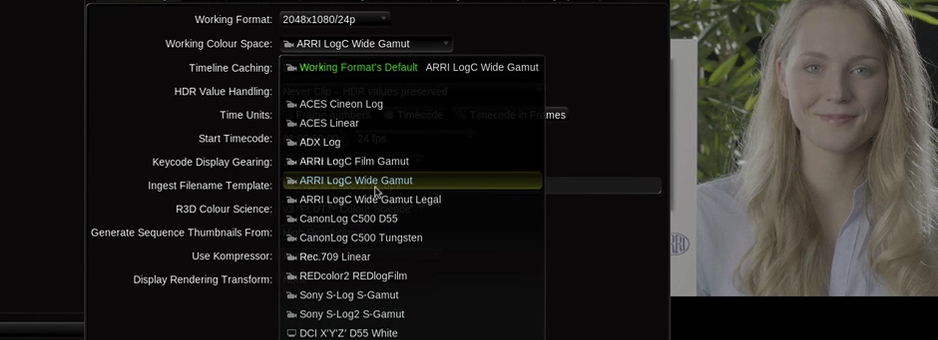Truelight
Unrivalled colour space management
Truelight has the pedigree as the world's only complete film colour management system for pre-visualising film images on electronic display devices—and was honoured with a Academy of Motion Picture Arts and Sciences (AMPAS) award in recognition of this work.
For over a decade, Truelight has enabled artists, colourists, cinematographers and directors to review, accurately, the final look of the film at any point in the digital post-production process—reducing film-outs, matching and rework, and saving valuable time.
And now, Truelight brings this wealth of colour science into the realm of digital cinematography with Truelight Colour Spaces.
Truelight Colour Spaces allow colour space conversions to be performed with the speed, accuracy, and dynamic range permitted by native floating-point GPU functionality. They can be defined externally of Baselight formats, and have a powerful function set that allows complex transforms formerly only possible with 3D LUT mechanisms.
You can find out more about Truelight Colour Spaces and how they support an ACES workflow in the videos in the following section. Alteratively, watch our Feature Tutorial, or read our Workflow Guide.
Effective Colour Management from Production to Distribution
Part 1: Challenges & workflows for colour management today
This video covers two topics: traditional grading workflows, and the challenges faced with modern digital image acquisition and digital colour reproduction.
So that we can view modern workflows in the right context, Daniele Siragusano first describes the behaviour and limits of different traditional workflows when grading an image. He then goes on to explain the new challenges we face when mixing different cameras and different display technologies, so that we can understand how modern colour management concepts - like ACES and Truelight Colour Spaces - can provide an answer.
Part 2: Solutions with ACES & Truelight Colour Spaces
In the second instalment, Daniele looks at ACES to show how the framework handles the challenges discussed in part 1 around digital image acquisition and pleasing colour reproduction.
He then demonstrates how to use Truelight Colour Spaces to implement the ACES idea, and shows how the concept can be extended for different grading workflows.
This table describes the advantages of using Truelight Colour Spaces for colour space conversions over format‐based spaces (in Baselight 4.3 and earlier) and Truelight profiles.
| Baselight 4.3 format colour spaces |
Truelight profiles | Truelight Colour Spaces | |
|---|---|---|---|
| Connectivity (implicit conversions) |
✓ | ✗ | ✓ |
| Tone mapping (exposure and contrast) |
✓ | ✓ | ✓ |
| Gamut mapping (hue and saturation) |
✗ | ✓ | ✓ |
| LUT‐free GPU render (fast and accurate) |
✗ | ✗ | ✓ |
The format‐based colour spaces in Baselight prior to version 4.4 conveniently applied implicit colour conversions where different formats were declared, but the space definitions were not general enough to provide the kinds of conversions applicable with LUTs. Truelight is fully general and flexible, but profiles need to be applied explicitly in the right places and, since its render mechanism is a 3D LUT, it can introduce precision errors.
The Truelight Colour Spaces combine the connectivity of the format‐based colour spaces with the flexibility of Truelight profiles, and also add an advanced render mechanism.




